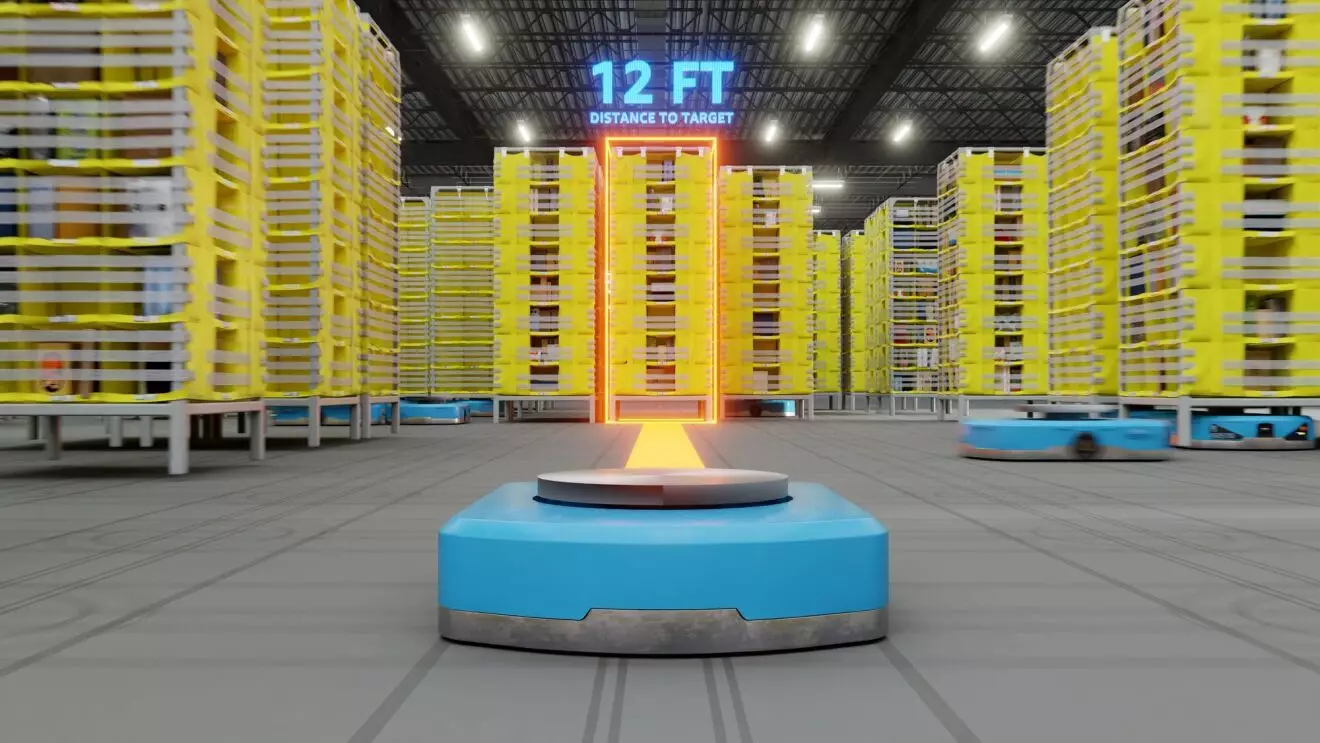Amazon’s deployment of its one millionth robot marks an astonishing milestone in the evolution of modern commerce. This revolution in automation signifies more than just a tech upgrade; it represents a seismic shift in how global supply chains are managed, how labor is perceived, and what the future of work might hold. While some celebrate the increased efficiency and cost reductions, others look at this trend with a mixture of awe and apprehension. Automation has undeniably transformed Amazon from a mere online retailer into one of the world’s largest manufacturers of robotics, a statement that reveals the extent to which technology now pervades every corner of its operations.
Yet, what does this mean for human workers? On the surface, it appears that automation is merely replacing monotonous tasks, freeing humans to engage in higher-value roles. However, this narrative, while hopeful, glosses over the deeper implications of rapid technological displacement. The truth is that machines are encroaching rapidly into domains traditionally reserved for humans, raising uncomfortable questions about job security, skill obsolescence, and income inequality. The optimism about humans stepping into supervisory roles can often obscure the reality that the transition may be uneven and fraught with hardship for many.
The Technological Edge: Smarter Robots and Accelerated Efficiency
Amazon’s latest achievements in robotics are not just about quantity; they are about quality. The integration of artificial intelligence with physical automation—courtesy of innovations like the DeepFleet model—is a clear signal that these robots are becoming increasingly intelligent and autonomous. By optimizing fleet movements, reducing travel time by 10%, and improving delivery speed, Amazon is setting a high standard for logistics efficiency.
One of the more compelling innovations is the Vulcan robot, which boasts dual arms, cameras, sensors, and perceptive touch capabilities. This amalgamation of hardware and AI suggests a new era where robots not only perform tasks but adapt and improve over time. The potential for such systems to evolve brings both excitement and concern. Will these robots soon operate with a level of autonomy that diminishes the need for human oversight altogether? This question remains pivotal as we navigate the boundaries of machine intelligence.
Furthermore, the claim that 75% of Amazon deliveries now involve some robotic assistance underscores automation’s undeniable influence. While efficiency gains are evident, it is worth questioning whether these technological advances are primarily driven by economic incentives or genuine improvements in service quality. Ultimately, the push for smarter, faster robots represents Amazon’s unwavering commitment to innovation, but at what cost to human labor and societal stability?
The Human Dimension: From Replacements to Upgrades
Contrary to dystopian fears, reports suggest that automation in Amazon warehouses is not solely about replacing humans but transforming their roles. Workers like Neisha Cruz, who transitioned from physically demanding tasks to supervisory positions, exemplify this evolution. Her salary increase highlights a potentially positive aspect: automation could elevate the workforce into more skilled, better-paid roles. However, this experience might not be reflective of the entire workforce, especially those in lower-tier positions who may face job loss instead of upward mobility.
The notable increase in productivity—shifting from 175 packages per employee annually in 2015 to roughly 3,870 today—illustrates the scale of robotic influence. Yet, these incredible figures also evoke questions about long-term sustainability. Massive efficiency gains accompanied by job displacement can widen socio-economic divides and threaten job security for millions of workers worldwide who depend on these roles for livelihood.
While automation can bring post-pandemic resilience and economic growth, it also raises profound ethical considerations about the direction of technological progress. Are we prioritizing corporate profits and operational efficiency at the expense of human dignity and societal cohesion? The picture is complex, and unilateral optimism may obscure the nuanced reality that automation’s benefits are unevenly distributed, with many workers potentially left behind.
The Future: Progress or Peril?
As Amazon continues to march forward with its robotic ambitions, the broader implications for the global economy and social fabric become increasingly apparent. The unchecked growth of automation fuels innovation but also compels us to critically examine the societal values and policies that will shape this trajectory. Will we create a future where human workers complement machines, or one dominated by alienating mechanization?
The key lies in responsible development and implementation. Amazon’s aggressive automation strategy exemplifies the potential for technology to revolutionize logistics and retail, but it also serves as a stark reminder that progress must be paired with safeguards—redeploying workers, fostering new skills, and ensuring equitable growth. Only then can the robotic revolution fulfill its promise of a smarter, more efficient future that uplifts rather than marginalizes humanity.


Leave a Reply